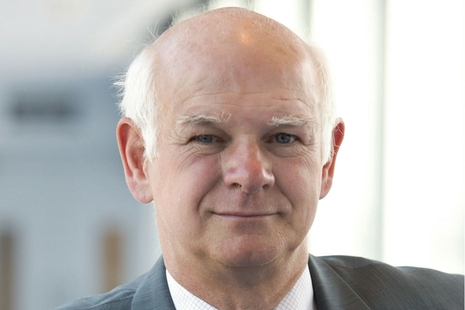It might seem surprising that, amid all the challenges central banks are facing nowadays, their contribution to combating climate change has risen close to the top of policymakers’ agenda. But a closer look reveals why: central banks’ balance sheets, which have ballooned after a decade of asset-purchase programs (so-called quantitative easing) may be skewed toward holdings that impede the transition to a green economy.
For example, researchers at the London School of Economics concluded that, although energy utilities make up only 5% of euro-denominated corporate bonds, they accounted for 25% of the European Central Bank’s bond purchases from 2014 to 2017. Likewise, Greenpeace estimates that fossil fuels comprised about a quarter of the ECB’s asset purchases during the first wave of quantitative easing.
Given this, the renewed focus on the ECB’s asset-purchase strategy in response to the COVID-19 crisis is understandable. But it is relatively new territory for central banks, so it is also understandable that reaching a consensus on their appropriate role in climate policy is not easy.
In the Green corner, so to speak, we find Isabel Schnabel, a fairly recent recruit to the ECB executive board. She argues that in its capacity as a supervisor, the ECB should “make sure that banks properly assess the risks from carbon-intensive exposures,” and that it should take account of the disclosure regime (for climate risks) of issuing firms in its asset purchases.
That approach does not seem to have attracted majority support on the ECB board. According to the Financial Times, there was “widespread reluctance” at the latest governing council meeting “to take the lead on tackling environmental issues with a preference for leaving that to governments.”
For now, ECB President Christine Lagarde is skillfully sitting on the fence. In January she set up a new climate change center at the ECB’s Frankfurt headquarters. It is small – “about ten staff” – and will “shape and steer the ECB’s climate change agenda.”
But in a January speech, Lagarde emphasized that the ECB will contribute to the effort to combat climate change “within its mandate, acting in tandem with those responsible for climate policy.” According to this formulation, “those responsible” does not seem to include the central bank itself, though she left herself some room for maneuver.
On the other side of the Atlantic, the US Federal Reserve has come rather late to this party, and is still not sure if it plans to dance. The Banque de France and the Bank of England (BOE) led efforts to create the Network for Greening the Financial System (NGFS) at the end of 2017, but the Fed declined to join until President Donald Trump left office.
The Fed has now joined, but the language used by the US authorities suggests they see a rather limited role for monetary and regulatory authorities. Fed chair Jay Powell said in December that the Fed has “historically shied away strongly from taking a role in credit allocation” and noted that the Fed lacks a mandate from Congress to combat climate change.
Janet Yellen, the new US Secretary of the Treasury, went further. At her Senate confirmation hearing, she testified that she found “particularly troubling” the idea of implementing climate stress tests on banks. The BOE is doing just that this year, and the G30 argued strongly for it in a recent report. But, according to Yellen, “financial regulators lack the expertise to make environmental policy.” And she firmly rejected “recent proposals to advance a liberal environmental policy agenda through the regulation of banks.”
Yellen’s central point was that much of the climate risk modeling done by banks is modeling the risk of regulatory intervention, rather than climate risk itself. So climate stress tests for banks are, on this analysis, “designed to prevent those institutions from holding certain assets as a form of indirect punishment against disfavored industries such as oil and gas.”
That is not language Mark Carney would have used when he was governor of the BOE. To be sure, there are skeptics at the ECB as well, such as Jens Weidmann, the head of the Bundesbank, who has argued for caution and only supports linking asset purchases to climate disclosures. But none has gone as far as Yellen in distancing the central bank from climate policy.
Discussions within the NGFS will be more interesting now that the Fed has joined. Green central bankers will need to hone their arguments and explain why a more activist policy fits within their mandates.
Perhaps it was to prepare for that battle to come that the ECB invited John Cochrane of the Hoover Institution to speak at its Conference on Monetary Policy at the end of last year. His message was uncompromising:
“Central banks are rushing headlong into climate policy. This is a mistake. It will destroy central banks’ independence, their ability to fulfill their main missions to control inflation and stem financial crises, and people’s faith in their impartiality and technical competence. And it won’t help the climate.”
Apart from that, as they say, it’s a fine idea.
The core of Cochrane’s argument was that the definitions of “green” and “brown” assets are disputed, and that the impact of any particular central bank action on global warming is impossible to assess. Furthermore, the ECB could face pressure to support other favored investments, for less valid and worthy reasons.
Cochrane may overstate his case. But, to counter it, central banks must anchor a more active climate change policy in a persuasive interpretation of their principal mandate. That should be possible, as there are respectable arguments for the proposition that climate change jeopardizes financial stability, and perhaps monetary stability as well. The ECB’s new climate change center should begin its work by making that case.
Howard Davies is Chairman of NatWest Group.
Copyright: Project Syndicate, 2021.
www.project-syndicate.org










